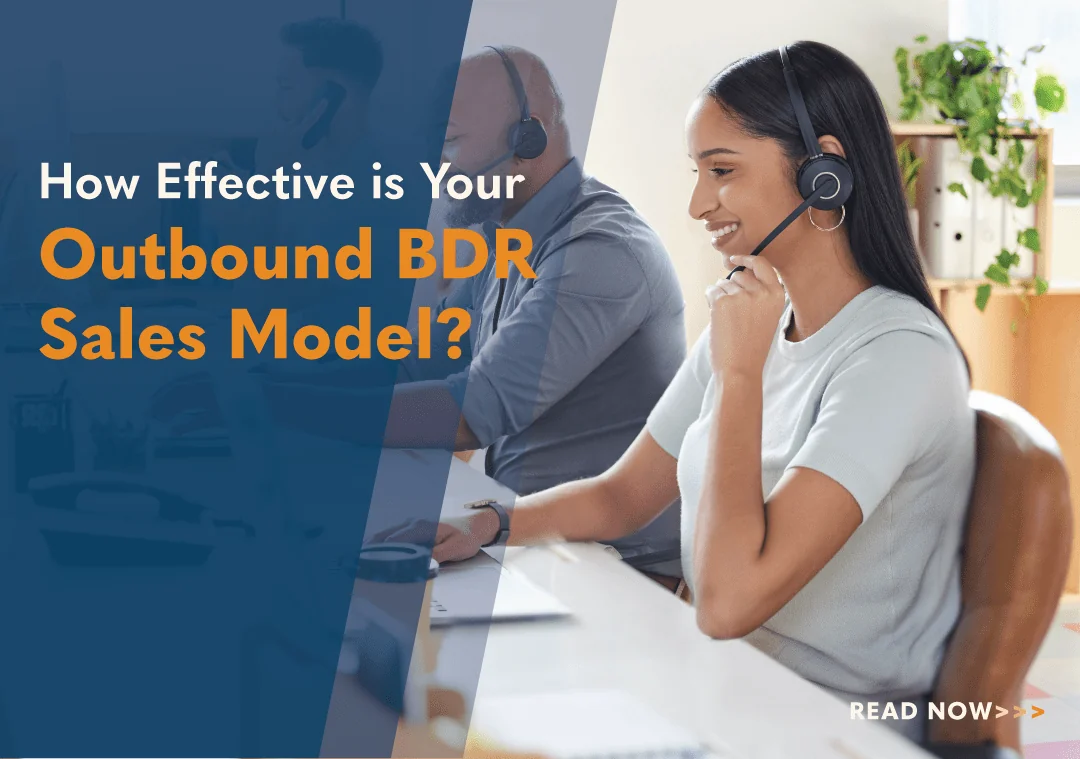How Effective is Your Outbound BDR Sales Model?

Many organizations have created specialized sales roles that require a specific skill set because selling, in general, has become more complex. Organizations have copied the Henry Ford assembly line model and applied it to their sales process. They have a technician for prospecting, a technician for winning business, and a specialist for account management. However, as buyers evolve, sales organizations must as well. In this article, we will explore the outbound BDR model, how it is evolving, and what high-performing companies can do to stay ahead of the curve.
Origins of the BDR Model
The BDR model was developed because it became more and more difficult for successful sales reps to prospect enough to keep their pipeline full while simultaneously closing enough business to achieve their target. In addition, the skills required to prospect effectively are different from the skills required to close deals. Therefore, the solution is to specialize the sales functions to optimize performance.
New Sales Tactics Create New Buyer Responses
Sales enablement technology was thought to be the great game-changer for sales. And for a while, it was. With an affordable cloud-based system, sales organizations could connect prospect data to a CRM platform, plug-in an auto-dialer, and have their BDR teams make hundreds of calls per hour. The problem with this model was that it worked so well that every organization with a sales team copied it. Then, decision makers were inundated with unsolicited sales calls. Their response was not answering the phone from unknown numbers and send those calls to voicemail.
The response from sales organizations was to increase the volume of calls, add BDR headcount, and make sales a numbers game again. When that failed to produce the desired results, the next step was to add more technology into the sales tech stack. This increased the volume of touches to each prospect using automation for email, text messages, social media messages, or video messages. The problem with that model is that buyers don’t respond to generic messages. No matter how many times that message is delivered. Instead of increasing the value provided to the prospect (hard), the focus is on touching more prospects (easy).
The Disconnect with Traditional BDR Model
Increasing the outbound volume without increasing the outbound value turns into a race to the bottom. The numbers stop working and the assembly line stops producing. One strong sales rep could put on X number of clients per month. Now, there are 3 BDRs but the company is still only adding X number of clients. The math does not work because buyers are evolving.
Put yourself in the shoes of the buyer. Assume this buyer is a decision-maker. They have the authority and a budget to go along with their years of experience. They take a call from a BDR who has enough skill to not get shut down in the first 10 seconds, but when the decision-maker asks one question, the BDR says, “Let me schedule you with Joe, who can answer your question,” or something to that effect. Then they book an appointment and hope the decision-maker shows up for the meeting. But a high percentage don’t show up and the BDR is calling to reschedule. Then the dance repeats itself.
Technology and Training are the Key
Technology by itself is not the answer today. Buyers want and expect more for their time. There is one major flaw in the example mentioned above — BDR reps are often focused solely on setting the appointment instead of the quality of the appointment. Plus, BDRs should enter the picture once the prospect has been warmed up.
Effective nurturing campaigns, designed to deliver the right message at the right time, ensure that BDRs are more likely to have a successful outcome. Then the BDR can engage in a deeper dialogue to ensure additional interest is created and set a stronger appointment. When the perception of value is low for the prospect, they have little desire to attend the appointment. Evidence of this can be found by looking at the data. When show rates drop below 50 percent, that is a sign the prospect just wanted to get off the phone. They agreed to a meeting because it was the path of least resistance. Buyers have raised their expectations, and for BDRs to deliver consistent performance, they need to increase the value they provide for each prospect, not just contact more prospects.
Why the BDR Model is Still Popular
It can be an effective model depending on who your target audience is and how complex the sales cycle is. But modern decision makers who make critical business decisions demand high value in return for their time. Giving these decision-makers what they want is always a wise choice, even if it means changing your approach. The faster a sales organization can deliver value, the shorter the sales cycle. When a company can provide their BDR reps with the right tools, training, and technology, the BDR model is an effective strategy.
Real Salespeople Love to Prospect
Prospecting requires effort, grit, and perseverance. When BDRs combine this with how to leverage the right tools and technology, a light bulb goes off. They set more quality appointments with better prospects and have better control over their performance. Appointments will stop slipping through the cracks, show rates increase, and the entire customer experience improves. Now the BDR is in control of their own destiny, which is motivating and invigorating.
In Conclusion
Prospecting is still an essential function for most sales organizations. The question is, who is the best person to handle the function, what is the right process to implement, and how can effective lead nurturing campaigns prime prospects for the right moment for a call? Every company must evaluate the cost, effectiveness, and productivity of their BDR process and decide for themselves. But if your sales growth has slowed, BDRs are churning, and you are not scaling growth like in the past, maybe it’s time to reevaluate your BDR approach.

- Account Planning (11)
- Awards (49)
- Client Testimonial (37)
- Personal Branding (19)
- Podcast (11)
- Research (70)
- Sales Career Development (87)
- Sales Coaching (156)
- Sales Consulting (137)
- Sales Culture (170)
- Sales Enablement (354)
- Sales Leadership (109)
- Sales Management (248)
- Sales Negotiation (16)
- Sales Prospecting (125)
- Sales Role-Playing (18)
- Sales Training (235)
- Selling Strategies (263)
- Soft Skills (70)
- Talent Management (94)
- Trusted Advisor (27)
- Virtual Selling (49)
- Webinar (9)


























